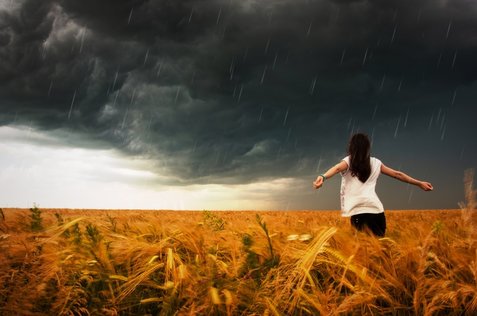|
Our Youthwise founder and clinic director, Johnny Lo, was interviewed by CBC national news to share about the impact of the Covid-19 pandemic on young adults. Check out this fascinating interview with him and other young adults below!
https://www.cbc.ca/news/canada/british-columbia/b-c-young-adults-covid-19-one-year-1.5920560
0 Comments
Check out the new article that Johnny wrote for Kelty Mental Health on how to deal with back-to-school anxiety! If you don't know already, Kelty Mental Health is one of the best mental health resources in British Columbia. There are lots of other information on mental health on their website. Be sure to check it out!
keltymentalhealth.ca/blog/2019/08/back-school-anxiety-tips-helping-your-child It is normal for children and teens (adults too!) to experience anxiety as they prepare to go back to school. Remember that every single human being has anxiety built into their bodies—it is kind of like a self-defense mechanism for the body. It warns you and helps keep you safe when you feel that you are threatened or are in danger. It prepares your body for the fight-flight-freeze response. Anxiety is actually a good thing to have when it is functioning the way it should. Unfortunately, anxiety can turn into a problem when it becomes too sensitive or when it stops working properly. Think of anxiety like a smoke alarm. Its original design is to warn you of danger but it becomes problematic if the alarm starts going off when there is no real smoke or fire around. As students prepare to go back to school, sometimes they would start thinking of unpleasant and stressful thoughts and as a result cause their anxiety to spike. Identify Thinking Traps and Look for Evidence In order to help students deal with back to school anxiety, one of the strategies is to help them identify the thoughts that trigger the anxiety. Sometimes these thoughts are realistic or sometimes they can be unrealistic. For example, if a student was bullied the year before and he knows that the same bully will be in his class this coming year, his worries are quite realistic and it makes total sense that he would be stressed about it! In this case, it would be crucial to help problem-solve which may include working with the school, talking to the teacher ahead of time, equipping your child with skills to cope with bullies, and other ways to help deal with the issue. On the other hand, imagine if a student becomes worried about being bullied and fears that he will get beaten up— even though he has never been bullied before and there is no real evidence supporting that he will get bullied. In this case, the child has what we call a “thinking trap.” There are many different types of thinking traps (e.g. mind-reading, predicting the future, catastrophizing, all-or nothing) and these traps are often what can perpetuate one’s anxiety. It will be important to help the student look for factual evidence that either support or does not support the particular thinking trap and to help him come up with a more realistic and helpful way of dealing with the problem. This process can be challenging and sometimes it may even require a professional to help. There are many other general strategies to help students deal with back to school anxiety. AnxietyBC (a great resource for anxiety!) has provided several helpful strategies which I have highlighted and summarized below. You can also read their full article here. 1) Don’t avoid the situation. The more you or your child avoids going to school or to a certain class, the more it will increase and reinforce the fears of going there in the long-term. Instead, try to look for ways to talk about the fears and come up with a solution to help reduce the worries. 2) Avoid reassurance-seeking, instead try problem-solving and plan! Try not to rely excessively on going to other people to have them reassure you that bad things won’t happen. Instead, try making a plan to help reduce or solve the problem. (Johnny’s note: In particular, children would often turn to their parents/caregivers for reassurance. Instead of providing reassurance, try reflecting and validating their worries first, and then work with the child to come up with various solutions.) 3) Look after the basics. Make sure you or your child is eating well, sleeping enough, and have a regular routine (especially for children!). Physical activity can be helpful too! 4) Role-play anxious situations. For some anxiety-provoking situations, it may be helpful to role-play the scenario so that the student will feel more confident in dealing with it. For parents, you can also use role-playing as a way to model and teach your child how to cope with scary situations. 5) Focus on the positive aspects. Sometimes anxiety can overshadow and minimize any other positive things going on. Remind yourself or your child of the positives, and help re-direct their attention towards the good. AnxietyBC has also recently published a 12-Step Back to School Checklist for Parents which can be useful if you have a child who is anxious. The transition going back to school can be difficult, but it can also be an opportunity for you or your child to grow stronger and closer! If you have any additional questions or worries about anxiety, feel free to send me an email and I’d be more than happy to help out! I hope this post has been helpful for you or your child! If there are any future topics you may want me to write about, feel free to leave me a message. Thanks! You know a TV series is controversial when schools all over the world, including many in British Columbia, have warned students about watching it. Critics have already highlighted the cautions of watching Netflix’s original series 13 Reasons Why, such as how the show can be triggering for people who struggle with suicidal thoughts, depression, anxiety, self-harm, sexual abuse, bullying, and many other issues that young people may face. In addition, 13 Reasons Why has also been criticized for romanticizing and glamourizing suicide, and that it portrays the aftermath of a suicide in a very unrealistic and fantasized way. Despite all this, I admit that I still managed to watch the entire series, not because I’m a fan of teenage drama-mystery, but more so to better understand and help those who have been disturbed by it. After watching 13 Reasons Why, I’ve identified 5 important lessons that may be helpful to look at especially if you, or someone you know, are struggling with similar problems. *Possible spoiler alert: Examples provided are from the show. 5 Important Lessons from 13 Reasons Why 1.) Teens need to have supportive adults in their life who are NOT their parents. Throughout the entire series, Hannah Baker (main character) was constantly struggling to find someone whom she can trust and talk to. The viewer can only wonder what would have happened if Hannah had more consistent, supportive, and responsible people in her life. It has been well-documented in research that one of the protective factors for mental health in teens is for them to have adults in their life who are caring, supportive, and engage in positive and healthy behaviours. These adults can often include people like youth leaders, grandparents, uncles, aunts, coaches, teachers, and so on. What would be even more beneficial is for young people to have adult mentors who would intentionally walk along side of them and help them get through life’s turbulence. These mentors should be adults other than the parents because very often the parents can be part of the teen’s stress and mentors can help them understand more about the adult’s perspective. Moreover, advice that is given by an adult mentor is usually received more openly and differently than when it is given by a parent— even if the message is the same. 2.) Parents need to matter more than peers. Another issue portrayed by 13 Reasons Why is the problem today of young people turning only to their peers for advice, instruction, and modeling instead of turning to their parents or other responsible adults. I am still surprised that none of the teens who received and listened to Hannah’s cassette tapes turned to their parents or other responsible adults earlier for advice on how to deal with them. Instead, they turned to each other and began plotting schemes on how to keep it all a secret. Gordon Neufeld, a developmental psychologist and author, construes in his book “Hold On to Your Kids” that in order for a child to be open to being parented by an adult, the child must be actively attached and want to be in contact and closeness with the adult. In other words, who the parent is to the child is more important than what the parent does. This crucial parent-child attachment relationship serves as a secure base and safe foundation for the child to venture out into the world, and to retreat back to when needed. Many problems may arise when young people do not have this essential parent-child attachment and they replace it with their peers. Parents may lose their parenting authority over their child and the child may become more distant from the parent. Peer relationships are also not the most stable or secure ones, especially in high school. There can be devastating effects when this foundation based only on peer-relationships crumbles and there is no other safe base left to retreat to. Lastly, although it is important for young people to have friends their own age to talk to, young people do not always give each other the best help or advice in life especially when they are still going through it themselves. More than ever, parents need to put more focus on building closeness with their child so that they will matter more than their peers. 3.) Learn how to identify suicidal risk. It is unfortunate how the high school in 13 Reasons Why didn’t seem to have talked about ways to identify suicide risk until after the incident. I wonder how many schools in real life are the same. Just like how many people are taught ways to identify a stroke or heart attack, I believe that it is just as important for people to learn how to recognize signs of suicide risk. Having been trained in conducting suicide risk assessments, it was an interesting experience going through the show and trying to identify the signs. Below is a quick mnemonic (“IS PATH WARM”) created by the American Association of Suicidology to help people remember the warning signs of suicide. Remember to always seek professional help or call 911 if you ever worry about the safety of an individual. Also, feel free to check out the crisis section in our resource page for more ways to get help.
4.) There is often more than one way to get help for any given problem. The scene of Hannah Baker’s final attempt to get help from her school counsellor before committing suicide raised many concerns. Most school counsellors and any other mental health professional in real life are usually much more competent and helpful than what was portrayed in the show. Even if Hannah found the school counsellor to be useless, it is important to note that there are many other ways to get help in real life, which the show failed to emphasize. There are multiple community resources outside of the school where one can get help such as crisis and suicide phone lines, online help chats (youthinbc.com), the hospital, your family doctor, and community mental health walk-in clinics. Whether you live in Vancouver, Burnaby, Richmond, Delta, Surrey, or any other parts of Greater Vancouver, each community should have their own mental health team that can provide support and counselling for all types of mental health challenges. Be sure to check what resources are available in your own community. There’s often more than you think! 5.) Remember that high school won’t last forever. People sometimes become suicidal when they feel that there is no hope and that there is no escape from their problems. Hannah started feeling this way after multiple tries to overcome her problems. Without a doubt, high school can be some of the most difficult years of one’s life especially if the student is being bullied or is hanging out with the wrong crowd. Teens are trying to figure out who they are while at the same time try to fit in and navigate the social nuances at school. School-work may also become more difficult and stressful, and students become more and more anxious about their future. There’s a lot going on in high school! The good news to all this is that one day high school will be over, and you will have more control over who you see each day and who you want to surround yourself with in life. There will also be more freedom in choosing what you want to do for school or for work. Just ask any adult and see what they say. So, to those who are having a hard time at school, remember that high school won’t last forever and that you do not have to walk through it alone. There is help. There is hope. A few people asked about how I came up with the name “Youthwise” so I thought I would quickly write about it. I knew since the very beginning that I wanted a name that highlights my passion and specialization in helping children, teens, and families. So after spending many endless nights lying in bed and brainstorming lists of names, I finally came up with this one. I chose “Youthwise” out of all the others because it most accurately captures our most important values.
First of all, Youthwise can mean something along the lines of “being wise with youth” or “youth wisdom,” which encapsulates our specialization, knowledge, and experience in providing counselling and effective therapeutic interventions for kids and teens who are struggling with mental health. The name does not intend to mean that we are the “wisest” or that we know everything there is to know about youth, but it is, however, our goal and vision to become one of the best helpers and equippers in child and youth mental health. Youthwise can also mean “in the direction of youth,” similar to words like clockwise, likewise, or go north wise. This meaning constantly anchors and reminds me that everything we do at Youthwise should be oriented, or to be “in the direction” for kids and teens. From the way the counselling room is set up to the engagement methods used in counselling, everything is done with the goal of helping kids and teens feel comfortable and to know that they matter. There’s a saying that I’ve learned over the years of working with youth which goes, “Teens don’t care how much you know until they know how much you care” and it is our goal to make that a point. That’s basically the meaning behind our name “Youthwise” in a nutshell. As for the logo, I’ll let you figure that one out on your own! Also, if you would like to learn more about me (Johnny) or about what we do, please be sure to check out the rest of our webpage. Don’t forget to subscribe to our newsletter or like our page on Facebook! Thank you for visiting Youthwise's blog! This blog will be providing relevant and resourceful articles discussing mental health challenges and well-being especially for children, teens, and families. Please be sure to subscribe or like this page if you would like to stay in the loop!
|
AuthorJohnny's passion is in helping children, youths, and families restore mental wellness. He is a registered clinical counsellor and has worked with children and teens for over 10 years in various settings including government child and youth mental health, non-profits, and faith-based communities. Categories |
© COPYRIGHT 2024 Youthwise Counselling & Mental Health Services Inc. - All Rights Reserved.







 RSS Feed
RSS Feed

